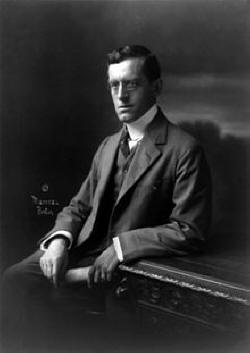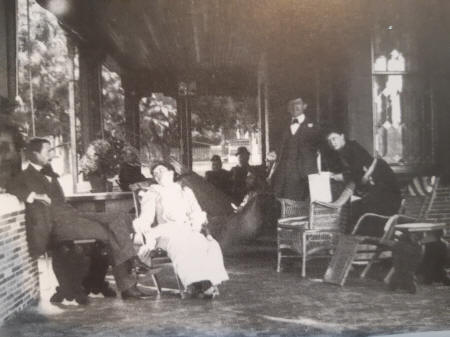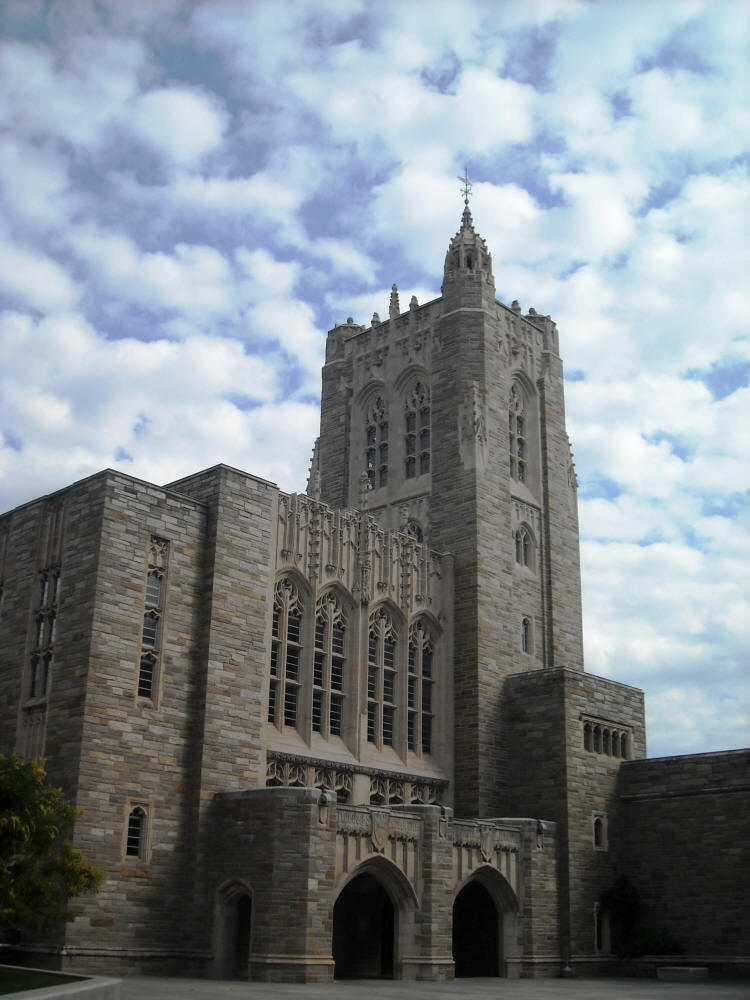

Queer Places:
Aisne-Marne American Cemetery and Memorial, Rue des Chevaliers de Colomb, 02400 Belleau, France
All Saints Chapel, 735 University Ave, Sewanee, TN 37383
All Saints Church, 209 Ashmont St, Dorchester Center, MA 02124
All Saints Episcopal Church, 338 E Lyman Ave, Winter Park, FL 32789
All Saints Episcopal Church, 51 Concord St, Peterborough, NH 03458
All Souls Congregational Church, 10 Broadway, Bangor, ME 04401
Calvary Episcopal Church, 315 Shady Ave, Pittsburgh, PA 15206
Cathedral Church of All Saints, 1330 Cathedral Ln, Halifax, NS B3H 2Z1, Canada
Cathedral Church of St. Paul, 4800 Woodward Ave, Detroit, MI 48201
Cathedral of Hope, 116 S Highland Ave, Pittsburgh, PA 15206
Cathedral of Saint John the Divine, 1047 Amsterdam Ave, 10025, USA
Chancel, Brown Memorial Park Avenue Presbyterian Church, 1316 Park Ave, Baltimore, MD 21217
Choate School, 333 Christian St, Wallingford, CT 06492
Christ Church United Methodist, 524 Park Ave, New York, NY 10065
Christ Church, 1220 River St, Hyde Park, MA 02136
Church of the Advent, 30 Brimmer St, Boston, MA 02108
Church of the Covenant, 11205 Euclid Ave, Cleveland, OH 44106
Cole Memorial Chapel, Norton, MA 02766
Concordia Lutheran Church, 1127 E Broadway, Louisville, KY 40204
Deborah Cook Sayles Public Library, 13 Summer St, Pawtucket, RI 02860
Doheny Memorial Library, 3550 Trousdale Pkwy, Los Angeles, CA 90089
Dwight Morrow High School, 274 Knickerbocker Rd, Englewood, NJ 07631
Emmanuel Church, 42 Dearborn St, Newport, RI 02840
First Presbyterian Church, 1605 Genesee St # 2, Utica, NY 13501
First Presbyterian Church, 20 Tacoma Ave S, Tacoma, WA 98402
First Presbyterian Church, 8 W Notre Dame St, Glens Falls, NY 12801
First Presbyterian Church, 840 S 17th St, Lincoln, NE 68508
First Unitarian Universalist Society, 1326 Washington St, Newton, MA 02465
First Universalist Church, 130 Highland Ave, Somerville, MA 02143
Fourth Presbyterian Church, Michigan Avenue, Chicago, IL 60607
Grace Episcopal Church, 300 Westminster St, Providence, RI 02903
Holy Cross Monastery, 1615 US-9W, West Park, NY 12493
Holy Rosary Church, 7120 Kelly St, Pittsburgh, PA 15208
House of Hope Presbyterian Church, 797 Summit Ave, St Paul, MN 55105
House of the Rising Sun, 657 Highland Ave, Fall River, MA 02720
Hunt Memorial Library, 6 Main St, Nashua, NH 03064
John W. McCormack Post Office and Court House, 5 Post Office Square #1150, Boston, MA 02109
Julia Ideson Building, 550 McKinney St, Houston, TX 77002
Knowles Memorial Chapel, 1000 Holt Ave, Winter Park, FL 32789
La Santisima Trinidad pro-cathedral, Havana, Cuba
Lady Chapel, Trinity Church, 33 Mercer St, Princeton, NJ 08540
Lucius Beebe Memorial Library, 345 Main St, Wakefield, MA 01880
Masters Hall, Masters School, 49 Clinton Ave, Dobbs Ferry, NY 10522
Mather School, 1 Parish St, Dorchester, MA 02122
Mercersburg Academy Chapel, Mercersburg, PA 17236
Oise-Aisne American Cemetery and Memorial, D2, 02130 Seringes-et-Nesles, France
Park Avenue Christian Church, 1010 Park Ave, New York, NY 10028
Phillips Church, Tan Ln, Exeter, NH 03833
Phillips Exeter Academy, 20 Main St, Exeter, NH 03833
Princeton University (Ivy League), 110 West College, Princeton, NJ 08544
Public Library, 104 N Main St, Fall River, MA 02720
Rehoboth, Aldridge Road, Chappaqua, NY 10514
Rice University, 6100 S Main St, Houston, TX 77005
Richmond Court, 1209-17 Beacon St, Brookline, MA 02446
Russell Sage Memorial Church, Far Rockaway, NY 11691
Sacred Heart Cathedral, 910 Central Ave, Dodge City, KS 67801
Sacred Heart Church, 183 Bayview Ave, Jersey City, NJ 07305
Second Presbyterian Church, 460 E Main St, Lexington, KY 40507
St. Andrews Episcopal Church, 2015 Glenarm Pl, Denver, CO 80205
St. Anne's Chapel, 20 Claremont Ave, Arlington, MA 02476
St Elizabeth of Hungary, Sudbury, Massachusetts 01776, Stati Uniti
St. Florian, 2626 Poland St, Hamtramck, MI 48212
St. George's School Chapel, 73 Chapel Dr, Middletown, RI 02842
St James Church, 55 Lake Delaware Dr, Delhi, NY 13753
St James' Episcopal Church, 865 Madison Ave, New York, NY 10021
St John the Evangelist, 35 Bowdoin St, Boston, MA 02114
St. Luke's Methodist Church, 211 N Sycamore St, Monticello, IA 52310
St. Mark's Episcopal Pro-Cathedral, 422 N Burlington Ave, Hastings, NE 68901
St. Mary and St. John, 980 Memorial Dr, Cambridge, MA 02138
St Marys Academy, Glens Falls, NY 12801
St Paul's Episcopal Church, 520 Summit St, Winston-Salem, NC 27101
St Paul's Episcophal Church, 26 Washington St, Malden, MA 02148
St Thomas Church, 1 W 53rd St, New York, NY 10019
Sweet Briar College, 134 Chapel Road, Sweet Briar, VA 24595
The Birches, Cat Rock Rd., hamlet of Garrison, town of Philipstown, NY
Tower, Christ Episcopal Church, 120 Church St NE, Blacksburg, VA 24060
Trinity Episcopal Church, 1015 Holman St, Houston, TX 77004
University of Richmond, 2 Ryland Circle, Richmond, VA 23226
Virginia War Memorial Carillon, Byrd Park, 1300 Blanton Ave, Richmond, VA 23221
Watkins Manor House, 175 E Wabasha St, Winona, MN 55987
Whitehall, 427 Concord Rd, Sudbury, MA 01776
 Ralph
Adams Cram (December 16, 1863 – September 22, 1942) was a prolific and
influential American architect of collegiate and ecclesiastical buildings,
often in the Gothic Revival style. Cram & Ferguson and Cram, Goodhue &
Ferguson are partnerships in which he worked. Together with an architect and
artist, he is honored on December 16 as a feast day in the Episcopal Church of
the United States. Cram was a fellow of the American Institute of Architects.
He was friends and sometime collaborated with
Fletcher Steele.
Ralph
Adams Cram (December 16, 1863 – September 22, 1942) was a prolific and
influential American architect of collegiate and ecclesiastical buildings,
often in the Gothic Revival style. Cram & Ferguson and Cram, Goodhue &
Ferguson are partnerships in which he worked. Together with an architect and
artist, he is honored on December 16 as a feast day in the Episcopal Church of
the United States. Cram was a fellow of the American Institute of Architects.
He was friends and sometime collaborated with
Fletcher Steele.
The Visionist believed in "art for art's sake" and in the nobility of artistic production over all other activities. Prominent Visionists were Herbert Copeland, Louise Imogen Guiney, Ralph Adams Cram, photographer and publisher F. Holland Day, poet Philip Savage and writer Alice Brown. Cram's novel The Decadent: Being the Gospel of Inaction was published in 1894. Describing the hidden world of behemian Boston in a "decrepit and degenerate age", the book was published anonymously "in order to elude local apprehension about the Visionists and their late-night carousing, smoking, drinking, and carrying on".
Cram was born on December 16, 1863 at Hampton Falls, New Hampshire to the Rev. William Augustine and Sarah Elizabeth Cram. He was educated at Augusta, Hampton Falls, Westford Academy, which he entered in 1875, and Exeter.[1]
At age 18, Cram moved to Boston in 1881 and worked for five years in the architectural office of Rotch & Tilden, after which he left for Rome to study classical architecture.[2] During an 1887 Christmas Eve mass in Rome, he had a dramatic conversion experience.[3] For the rest of his life, he practiced as a fervent Anglo-Catholic who identified as High Church Anglican. In the 1890s, Cram was a key figure in "social-controversial-inspirational" groups including the Pewter Mugs and the Visionists.[4]
In 1900, Cram married Elizabeth Carrington Read at New Bedford, Massachusetts. She was the daughter of Clement Carrington Read and his wife.[5] Read had served as a captain in the Confederate Army during the American Civil War. Elizabeth and Ralph had three children, Mary Carrington Cram, Ralph Wentworth Cram and Elizabeth Strudwick Cram.[1] The family burial site is at the St. Elizabeth's Memorial Churchyard.[6] The churchyard is adjacent to St Elizabeth's Chapel, which Cram designed.[7]

Visionist Copeland, Guiney, Cram and Brown on the veranda of the Day
mansion in Norwood, 1892
Christ Church United Methodist, New York City

Princeton University Chapel
St James' Episcopal Church, New York City
St Thomas Church, New York City
Lady Chapel, Trinity Church, Princeton
Cram and business partner Charles Wentworth started business in Boston in April 1889 as Cram and Wentworth. They had landed only four or five church commissions before they were joined by Bertram Goodhue in 1892 to form Cram, Wentworth and Goodhue. Goodhue brought an award-winning commission in Dallas (never built) and brilliant drafting skills to the Boston office.
In contrast to the conservatism of his architecture, Ralph Adams Cram's personal life (at least before he married) was filled with wild parties, long dinners at fashionable restaurants, and mystical rituals at private clubs. Drawing on this lifestyle, in 1893 the firm Herbert Copeland and F. Holland Day published his book, The Decadent, an anonymous account of opium, Japanese robes, and red fezzes in a country house. Of all the Bohemians, Cram was the most socially connected. He was friends with Bernard Berenson, Isabella Stewart Gardner's art advisor, and he eventually became a member of many of the city's most important clubs. Second in influence among the Bohemians was Louise Guiney, but she had less access to the elite because she was poor, Catholic, and female. Still another gay member of the aesthetes was Daniel Berkeley Updike. He worked for Houghton Mifflin before starting his own publishing firm, Merrymount Press, an obvious allusion to the notorious colonial settlement. Updike published books for Ned Warren and Edith Wharton specifically requested his services for several of her books. Another gay man who was part of this circle was Thomas Meteyard, an artist known for his glistening paintings and prints as well as the wild all-male parties he threw at his estate in Weymouth. Meteyard spent much time in Europe, and after his mother died he moved to London permanently. He purchased a house across the street from Hempstead Heath, then and now London's popular outdoor gay cruising area. Cram eventually married, perhaps out of love or maybe because he needed respectability in order to advance his career designing churches and college buildings. Though he had several children, the marriage does not seem to have been a happy one. It may have started off poorly when Cram brough a male friend along on his honeymoon.
Henry Davis Sleeper and A. Piatt Andrew frequently socialized with Helen Storrow and her husband, while Henry James was a repeat guest at Red Roof. Sleeper and Andrew entertained most of Boston society, including Harry Frick and Archbishop (later Cardinal) O'Connell, who told Sleeper that he wished to visit Red Roof again. Sleepet was also a close friend of Ralph Adams Cram and was a pall-bearer at Arthur Little's funeral in 1925.
Cram’s architectural partner, Charles Wentworth, was very concerned when, as early as in 1895, he wrote to Cram and Bertram Goodhue: “I hope you boys have given up the Visionists; certain questionable characters belonging to the society are likely to give it an extreme black eye.” And it was also Wentworth who pointed out to Cram and Goodhue how risky to their careers their bohemian activities were in the wake of Wilde’s trial and downfall. “You are both queer,” he wrote his partners, “and queer things are looked at askance since Oscar’s exposé.” “Poor Oscar,” added Wentworth, “what horrid privations he will have to endure.”
Wentworth died in 1897 and the firm's name changed to Cram, Goodhue & Ferguson to include draftsman Frank Ferguson. Cram and Goodhue complemented each other's strengths at first but began to compete, sometimes submitting two differing proposals for the same commission. The firm won design of the United States Military Academy at West Point in 1902, a major milestone in their career. They set up the firm's New York office, where Goodhue would preside, leaving Cram to operate in Boston.
Cram's acceptance of the Cathedral of St. John the Divine commission in 1911 (on Goodhue's perceived territory) heightened the tension between the two. Architectural historians have attributed most of their projects to one partner or the other, based on the visual and compositional style, and the location. The Gothic Revival Saint Thomas Church was designed by them both in 1914 on Manhattan's Fifth Avenue. It is the last example of their collaboration, and the most integrated and strongest example of their work together.
Goodhue began his solo career on August 14, 1913. Cram and Ferguson continued with major church and college commissions through the 1930s. Particularly important work includes the original campus of Rice University, Houston, as well as the library and first city hall of that city. Also notable is Cram's first church in the Boston area, All Saint's, Dorchester. The successor firm is HDB/Cram and Ferguson of Boston.
A leading proponent of disciplined Gothic Revival architecture in general and Collegiate Gothic in particular, Cram is most closely associated with Princeton University, where he served as supervising architect from 1907 to 1929, during a period of major construction. The university awarded him a Doctor of Letters for his achievements.[1]
For seven years he headed the Architectural Department at Massachusetts Institute of Technology.[8] Through the 1920s Cram was a public figure and frequently mentioned in the press. The New York Times called him "one of the most prominent Episcopalian laymen in the country".
He made news with his defense of Al Smith during his electoral campaign, when anti-Catholic rhetoric was used, saying "I... express my disgust at the ignorance and superstition now rampant and in order that I may go on record as another of those who, though not Roman Catholics, are nevertheless Americans and are outraged by this recrudescence of blatant bigotry, operating through the most cowardly and contemptible methods."[9]
In around 1932, he designed the Desloge Chapel in St. Louis, MO, the Gothic chapel designed to echo the contours of the St. Chapelle in Paris. Desloge Chapel, which is associated with the Firmin Desloge Hospital and St. Louis University, in 1983, was declared a landmark by the Missouri Historical Society.[10][11] In 1938, he was elected into the National Academy of Design as an Associate Academician.
As an author, lecturer, and architect, Cram propounded the view that the Renaissance had been, at least in part, an unfortunate detour for western culture.[12] Cram argued that authentic development could come only by returning to Gothic sources for inspiration,[2] as his "Collegiate Gothic" architecture did, with considerable success. For his Rice University buildings, he favored a medieval north Italian Romanesque style, more in keeping with Houston's hot, humid climate.
A modernist in many ways, he designed Art Deco landmarks of great distinction, including the Federal Building skyscraper in Boston and numerous churches. For example, his design of the tower of the East Liberty Presbyterian Church, Pittsburgh, was inspired by the Empire State Building. His work at Rice was as modernist as medieval in inspiration. His administration building, his secular masterwork, has been compared by Shand-Tucci to Frank Lloyd Wright's work, particularly in the way its dramatic horizontality reflects the surrounding prairies.
The architectural historian Sandy Isenstadt wrote in a review of Cram's biography that "... (modernist) disdain (of Cram) turned out to be modernism's loss". Peter Cormack, director of London's William Morris Gallery, said regarding the critical neglect of Cram's work that it was "a phenomenon which has significantly distorted the study of America's modern architectural history... (Cram) deserves the same kind of international--and domestic--recognition accorded (all too often uncritically) to his contemporary Frank Lloyd Wright".
My published books: